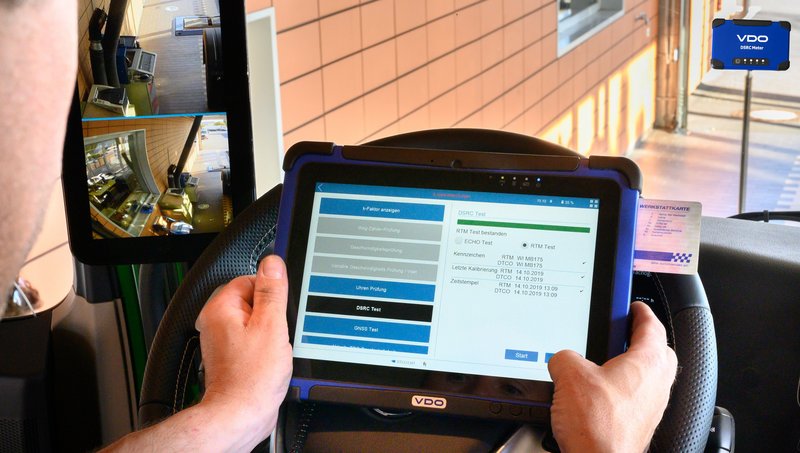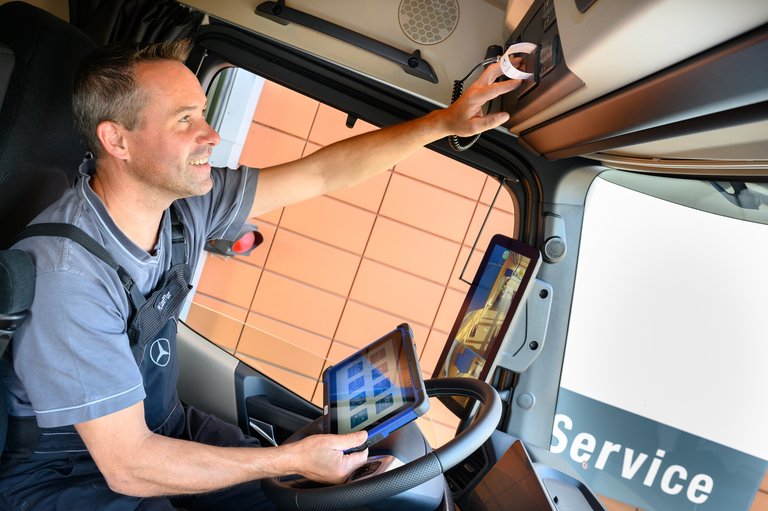The Smart Tachographs Are Coming: What Workshops Should Know about Testing
- Important: In the coming months a new generation of tachographs will be coming to workshops for their first inspections
- Continental’s VDO Workshop Tablet, services and new test equipment offer solutions for workshops of any size
- Business potential: The next generation will arrive as soon as 2023, followed by retrofitting campaigns and an extension to vehicles weighing less than 3.5 metric tons
Villingen-Schwenningen, Germany, March 2021. In the coming months many workshops will, for the first time, have to perform the §57b inspection as extended according to Annex 1C, which is more complicated than the previous routine. In the summer of 2019 already, vehicle workshops began applying the extended test procedure for the new generation of smart tachographs, as required by EU Regulations 165/2014 and 2018/502. The DTCO tachograph was calibrated accordingly in new vehicles. However, the first vehicles with smart tachographs that are due for mandatory two-year inspection and maintenance will start coming to workshops only now. This will open up new opportunities for them, and with the help of digital equipment they will be able to limit the greater complexity and manage the test procedure successfully. Against this background, technology company Continental is calling attention of commercial vehicle workshops to changes in the testing of smart tachographs as compared to devices of earlier generations. At the same time, it is reminding them of the coming extension of mandatory testing to new vehicle classes and the phased introduction of the next DTCO generation, including mandatory retrofitting, starting in 2023.
The smart tachographs will have new interfaces, and workshops will have to be able to test them. Besides performing familiar tasks like checking the integrity of the Kitas seal and testing the tachograph’s memory functions, they will now have to test the DSRC interface and satellite reception. The test personnel will have to demonstrate that they have the technical prerequisites for activating, testing, installing and later inspecting smart tachographs. In addition, workshops that perform these tests will need a workshop card of the second generation. Continental advises workshops to update their knowledge and make sure that their inspectors are trained and certified for the new generation. Although it remains to be seen how the authorities will handle the issuance of new workshop cards in practice, it is possible that they will insist on documentary evidence of proficiency.
A question of economic efficiency
Workshops know about this, but many are still not prepared for the new tachographs. “We’re in constant contact with our workshop partners in order to provide maximum transparency,” says Continental’s tachograph expert Markus Weide. Weide is not at all surprised by the hesitancy of these businesses. “After all, many are asking themselves whether it’s worth the effort and expense to invest in DSRC and GNSS test equipment, plus additional peripheral devices.” When confronted with such misgivings, he reminds the workshops that tachograph checks are linked with other service appointments. If they no longer offer §57b inspections as part of their service portfolio, they run the risk of losing regular customers, because the advantages of “one-stop shopping” for inspection and tachograph testing are much appreciated. “Transport companies will hardly accept the unnecessary downtimes that come from making an appointment in workshop A for inspection and a separate appointment in workshop B for tachograph testing,” he explains.
Securing current business and planning for future opportunities
It must also be considered that a large number of tachographs requiring new calibration can soon be expected. The EU Mobility Package I stipulates that all vehicles with a gross weight of 3.5 metric tons and over must be retrofitted for the coming second generation of smart tachographs no later than autumn of 2025 – if they are to be used for cross-border journeys. In less than a year after that, digital tachographs will also be required for light commercial vehicles weighing 2.5 tons and over – again if they are used for cross-border transport. “In view of this market potential, workshops should not ask themselves whether or not to offer §57b inspections in the future, but rather how to make the inspection process as fast and reliable as possible,” says Weide.

Valerie Libercka
Media Spokesperson Smart Mobility
Continental Automotive




